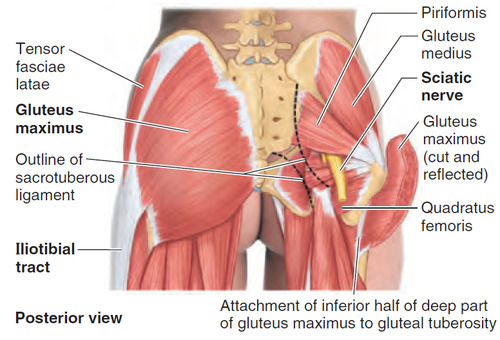
Generally, conditions of this type are referred to as nerve entrapment or as entrapment neuropathies the particular condition known as piriformis syndrome refers to sciatica symptoms not originating from spinal roots and/or spinal disc compression, but involving the overlying piriformis muscle.

When the piriformis muscle shortens or spasms due to trauma or overuse, it can compress or strangle the sciatic nerve beneath the muscle. Overuse syndromes: Piriformis muscle hypertrophy (viz., in athletes) Sitting for prolonged periods (office workers, taxi drivers, bicycle riders) Early (proximal) divisions of the sciatic nerve into its tibial and common peroneal components can predispose patients to piriformis syndrome, with these branches passing through and below the piriformis muscle or above and below the muscle. Sciatic nerve course/branching variations with respect to the piriformis muscle: In over 80% of the population, the sciatic nerve courses deep to and exits inferiorly to the piriformis muscle belly/tendon.

NSAIDs, steroids, botulinum toxin injections Herniated disc, kidney stones, SI joint dysfunction Īvoiding activities that cause symptoms, stretching, medications Location of piriformis syndrome within the bodyīuttock pain that is worse with sitting


 0 kommentar(er)
0 kommentar(er)
